
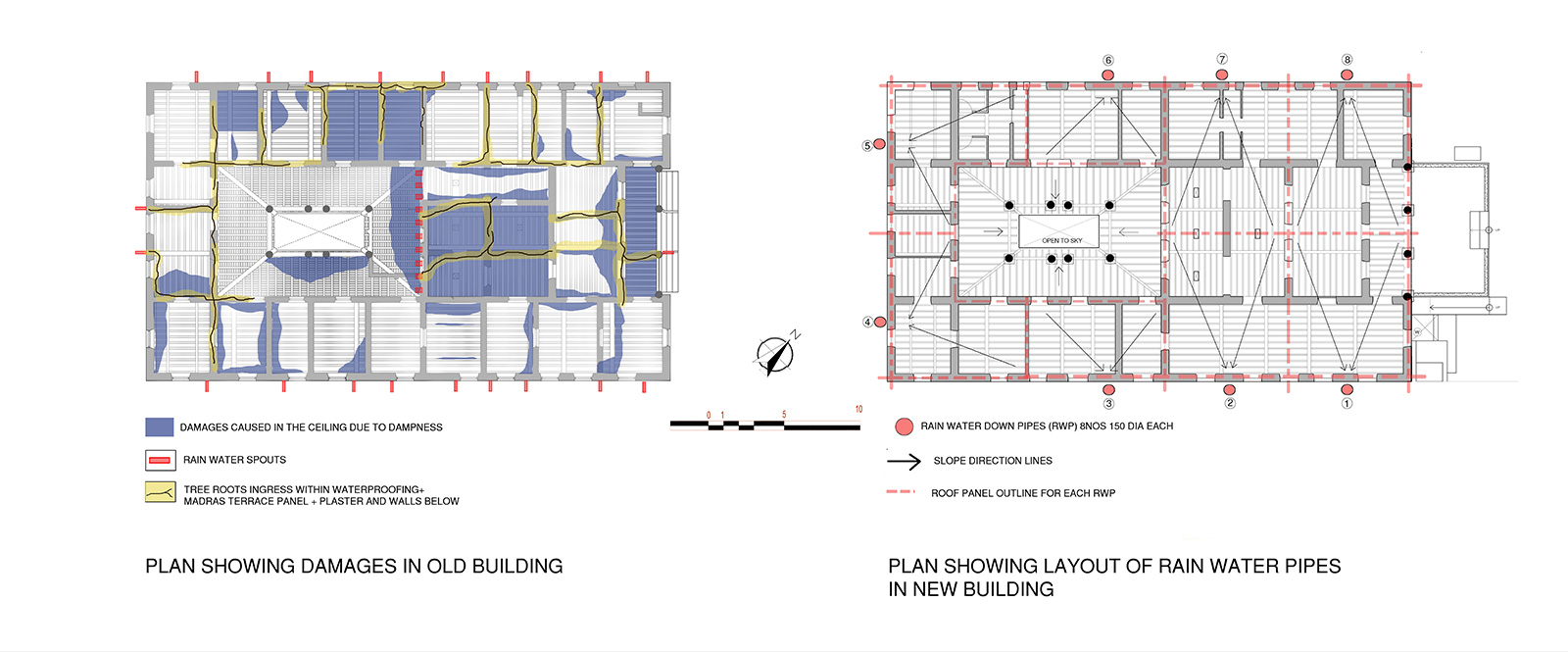
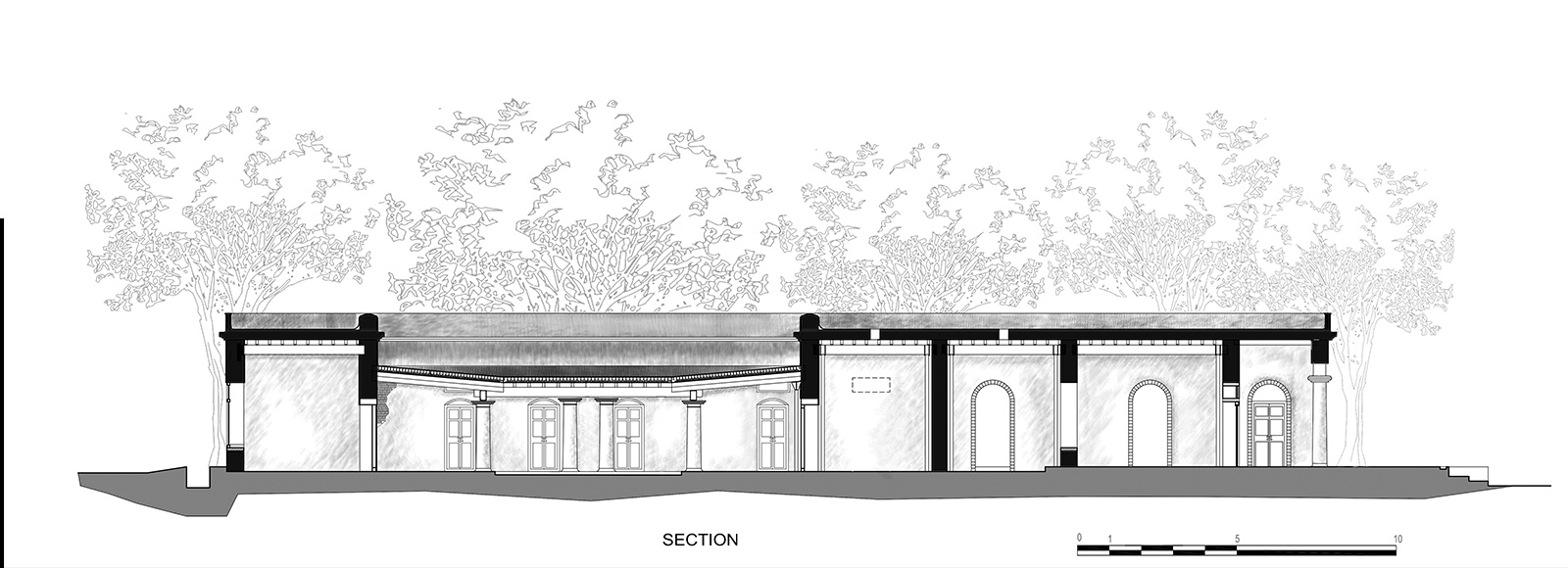
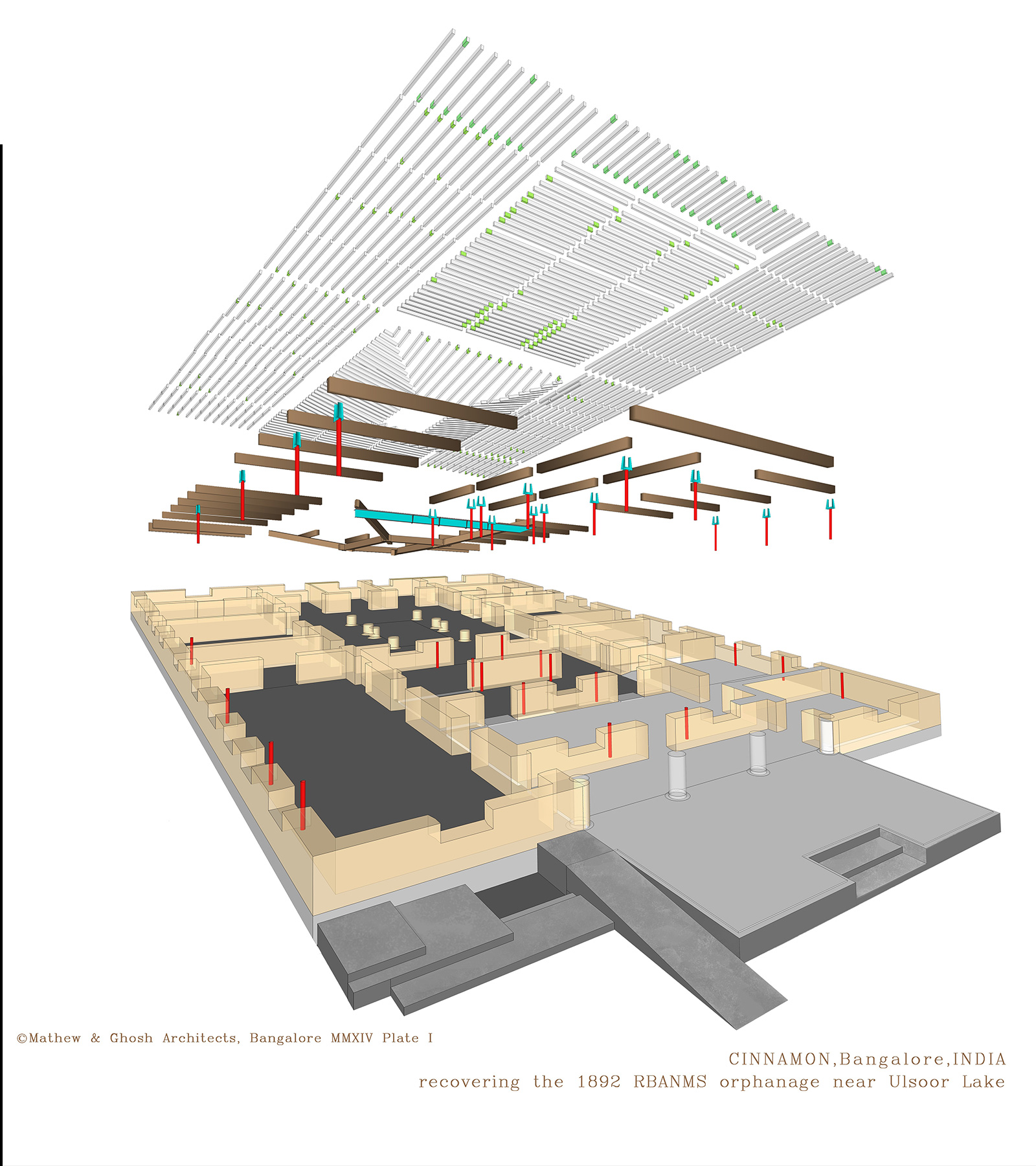
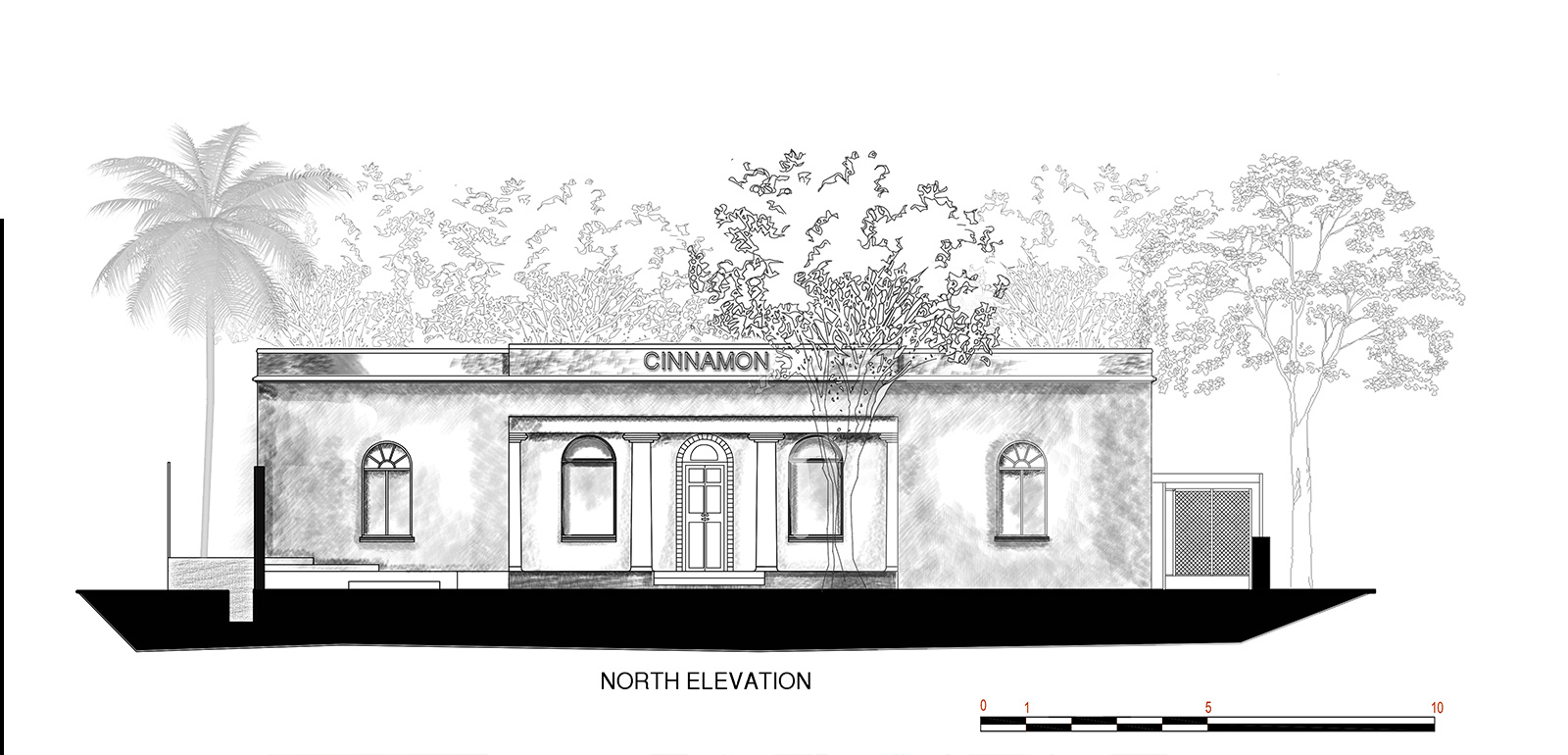

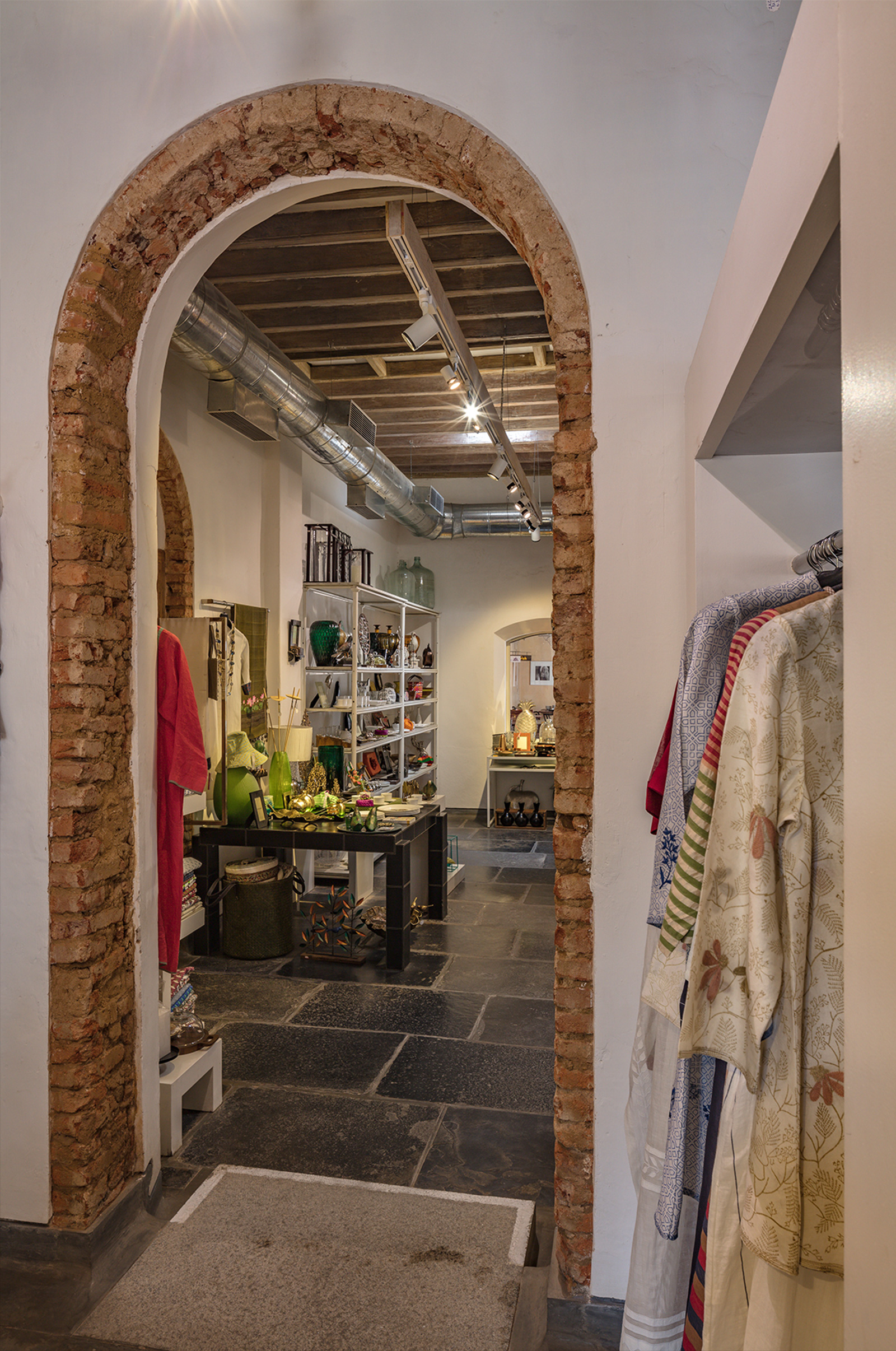
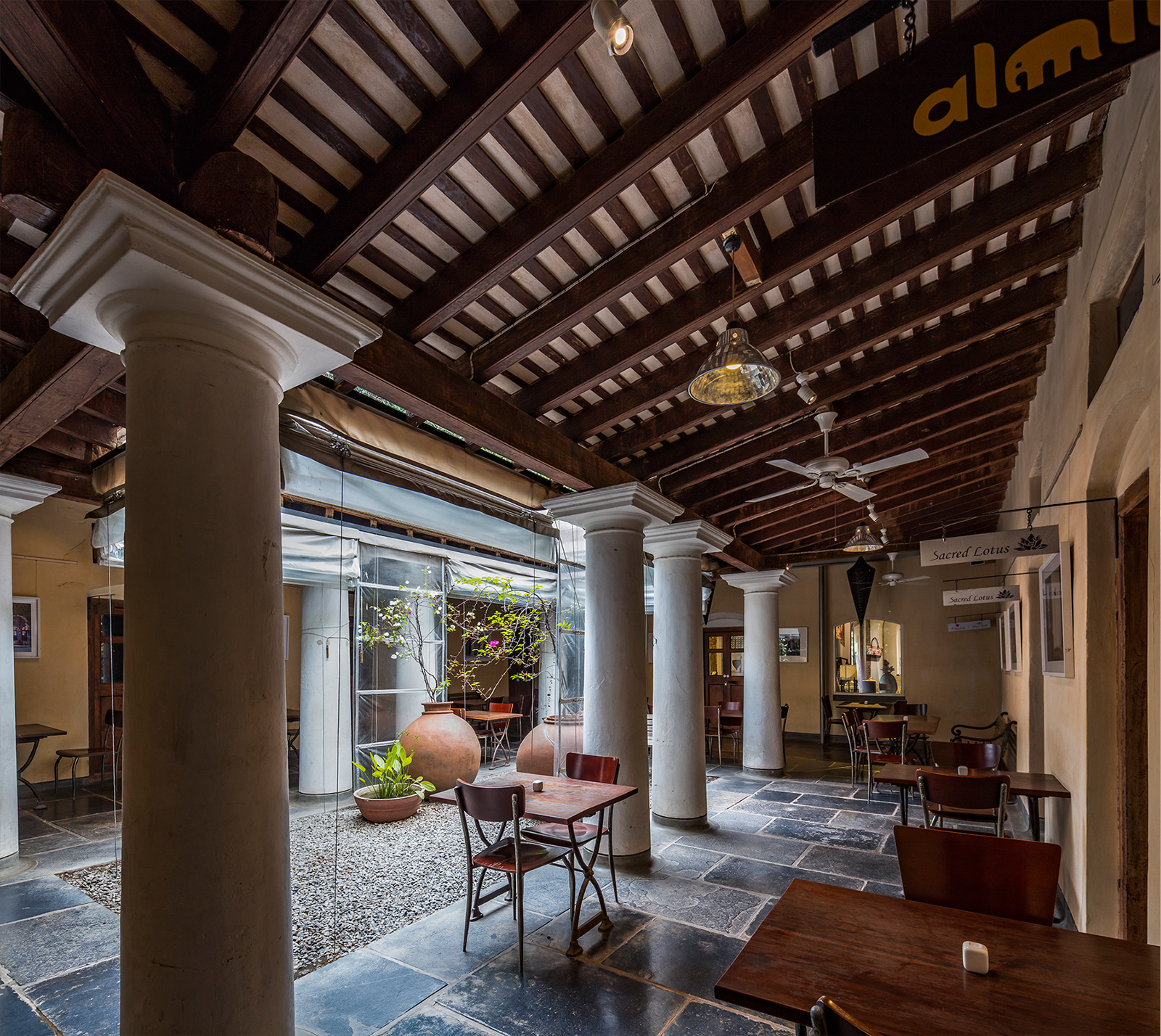
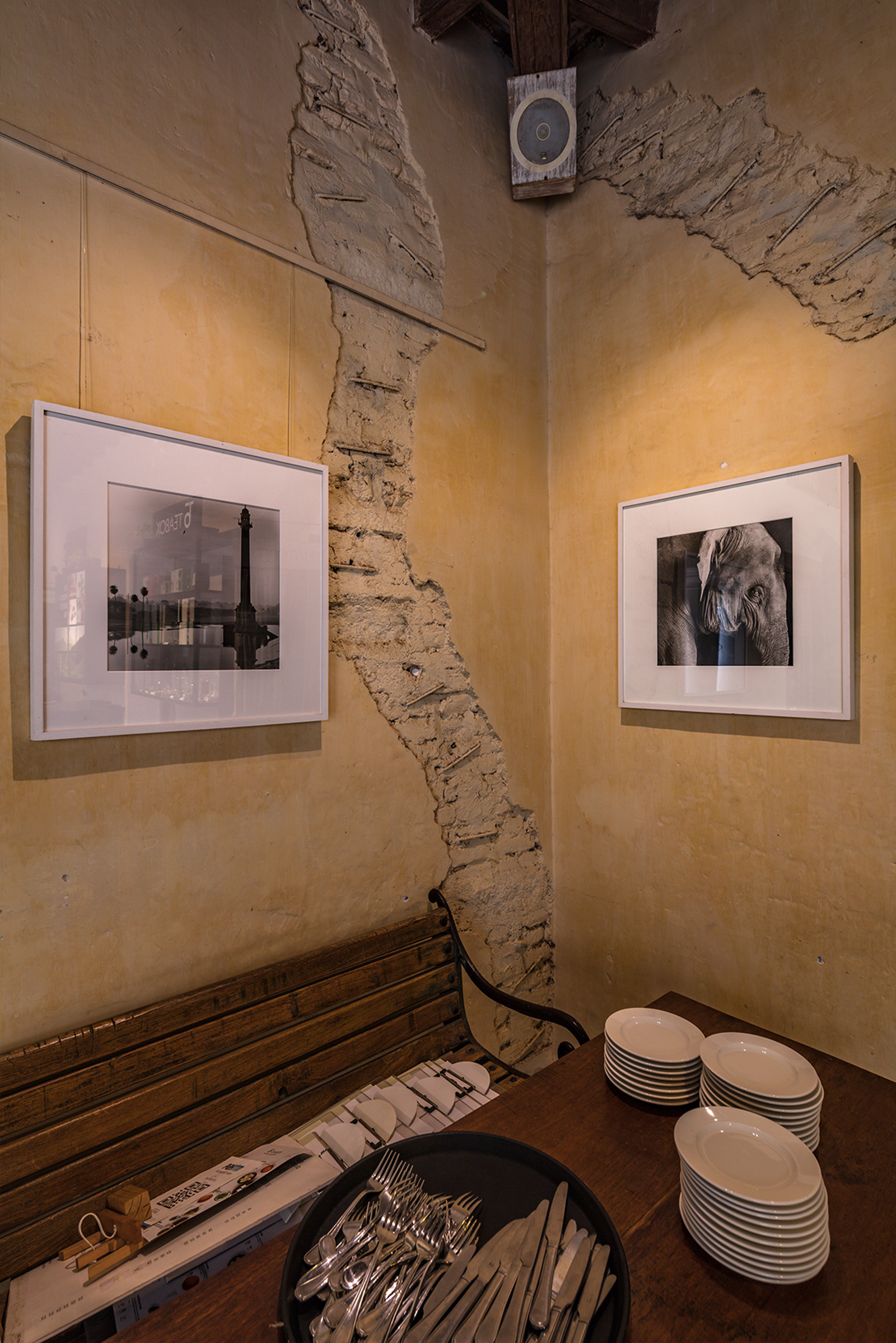

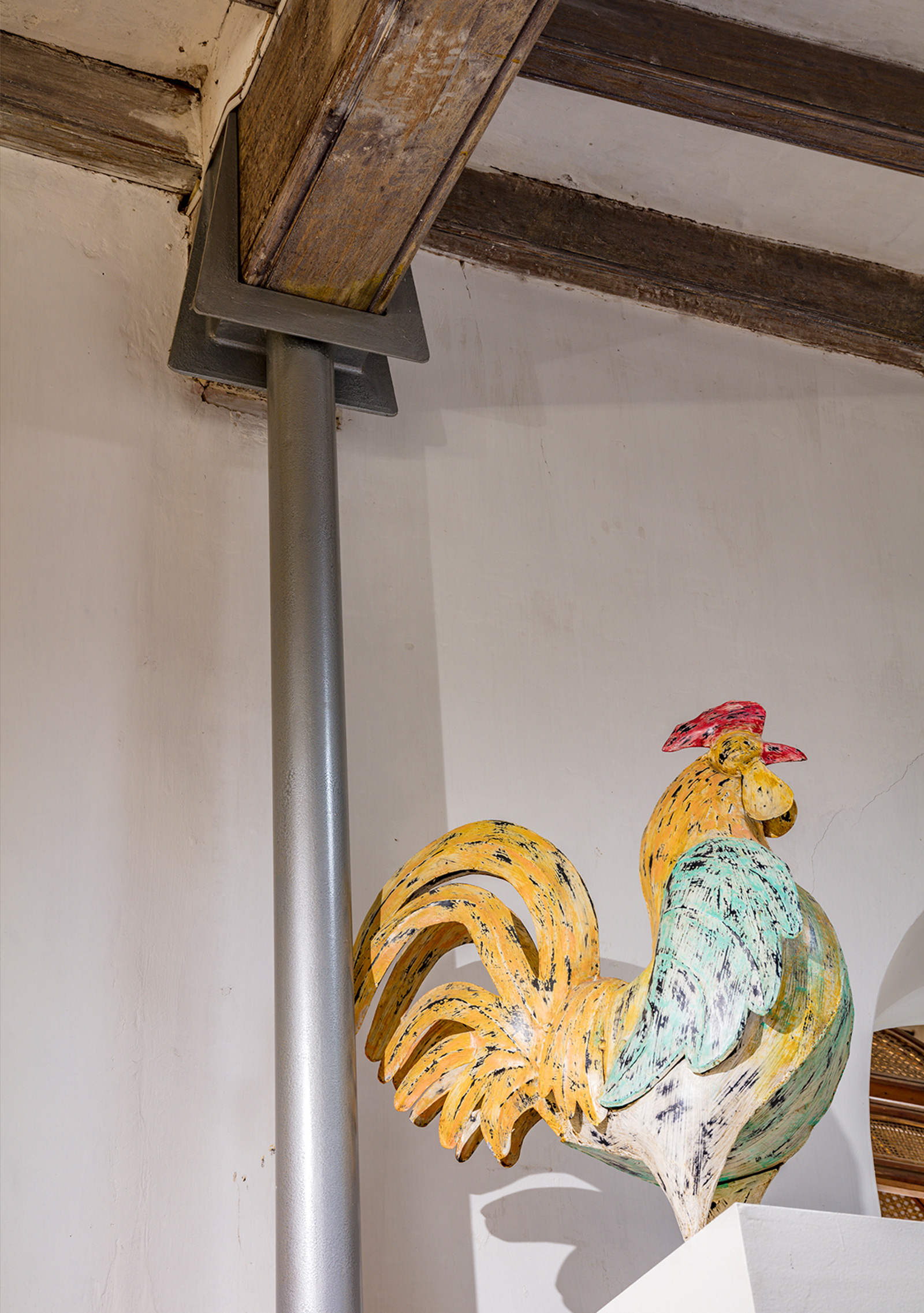

Project: CINNAMON – a boutique store to be housed in a dilapidated building from the 19th century. Location: Gangadhar Chetty Rd, Bangalore, Karnataka 560042 Client: CINNAMON BOUTIQUE PVT. LTD. Site Area: 1500 sq mts Built up Area: 680 sq mts approx Completion of project: 2014 Photography: Pallon Daruwala
Rai Bahadur Arcot Narrainswamy Mudaliar was a philanthropist with a strong affinity for social reform. He belonged to a well known historic family, and founded the R.B.A.N.M.'s Educational Charities and R.B.A.N.M.'s Chattram and other Charities.
During the Great Famine 1876-78, the miserable condition of the orphans prompted Narrainswamy Mudaliar to setup an orphanage. The foundation stone for the orphanage was laid by His Excellency the Marquess of Lansdowne, the Viceroy and Governor General of India on 23rd November 1892.
Located in the wetlands of the Halasuru lake (the site being visible in the extended flood plain of the lake in the 18th century city maps) the soil condition had repercussions for the structure over 120 years. Firstly the soil due to extreme clay content is prone to textural slippage and is also more prone to expansion and contraction of volume due to change in sub soil water content / moisture: Thus unequal settlement had caused shear stresses leading to parts of the structure ‘toppling’. Additionally the foundation was fractured and the corners of the building (the four corners of the structure extremities) began separating from the main body elevations of the building. A further cause of the subsoil condition deterioration has been the wearing off of layers of soil blow the foundation due to the open rain water drainage runoff that was flowing on the East and South of the immediate edges of the sides of the building.
To stabilize these corners a 2 pronged strategy was deployed. Firstly to do underpinning to deter & stop further effect of settlement due to fractures within the foundation & to fill any soil hollows in their vicinity which could cause further erosion of soil below. Secondly to tie and stitch structurally the upper parts of the structure at these 4 building corners to make them into monolithic elements along with the entire building. The stitch was done in 2 complimentary ways, one with insertion of stone slabs at cracks to counter compressive forces , and the second being with steel staples with grouted and laced alternately over the length of cracks; then light lime mortar pressure grouted along the cracks once done.
The restoration therefore has brought the building to an extended life: a. By dealing with the foundation structural elements b. By dealing with the connected shell elements of the walls c. By dealing with the roof structural elements.
“This kind of project comes at a time when the loss of history / culture has come around full circle to bother India. Bangalore more so, because it never was a kingdom or trade capital inheriting a significant volume of buildings. Whatever was there from the beginning of Bangalore in the 1500s has largely been vandalized, encroached or lost for the intrinsic value of land ”.
“The colonial architects played with their take on building for India; planting domes for an Indian label, onto European typologies / plans / architectural elements. Under the same prank - at Cinnamon, Bangalore, new India literally changes into new clothes / new identities, underneath a suspended colonial canopy and behind a sheer curtain, of the changing room”. Soumitro April 2014.

